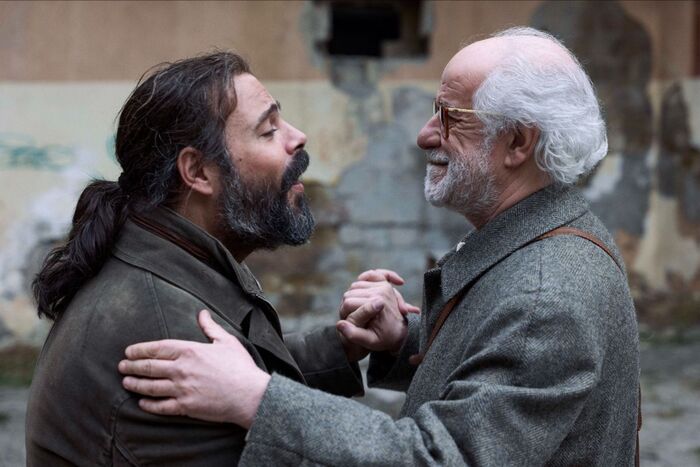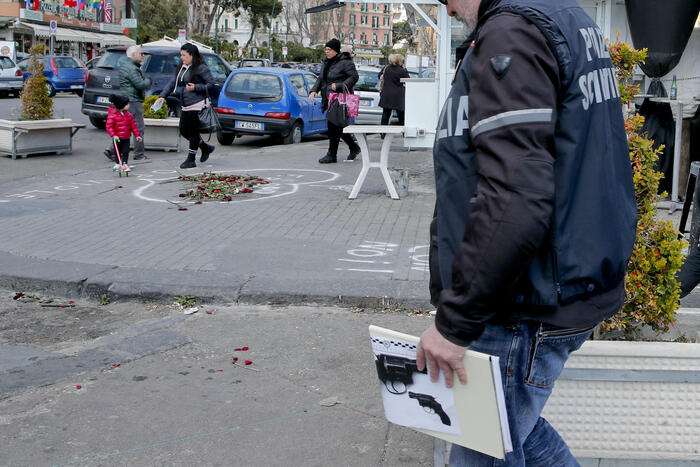Did you say pineapple?
Really?
Again?
No no no…".
The chosen best pizza maker in Europe in 2021 and 2022 cannot believe what the author of the crowned best pizza in Spain has just said in the latest edition of Madrid Fusión.
"Of course, and look, when I'm hungover, I ask for Domino's and it's wonderful," insists Lolo Zozza (Rome, 33 years old), the man in charge of Can Pizza, with 10 stores spread throughout the province of Barcelona, Madrid and Ibiza.
The author of Jerry Tomato (the triumphant pizza in Madrid Fusión) has invited the best pizza chef in Europe, Peppe Cutraro (Naples, 26 years old), to bring his creations during two sessions in two Can Pizza locations in Madrid and Barcelona.
On the menu, each offers two pizzas.
Those of Cutraro,
personal variations of the Neapolitan canonical with ingredients such as taggiasca olives or fig jam;
Zozza's, riskier versions of the Roman version, with her already distinctive way of using the guanciale or all the tomato splendor found in her award-winning work.
"Is this what you brought me for?
This is a provocation”, insists Peppe Cutraro, annoyed, who runs a restaurant in Paris with his first name to which pizza fans from half the world make a pilgrimage.
Both have been discussing dough, tomato and mozzarella for almost an hour at Can Pizza on Calle de Serrano in Madrid and have agreed on practically everything.
But the pineapple has arrived.
“I don't understand why people get like this when I say I don't mind pineapple on pizza.
I even like it.
This one, when he saw her yesterday at our premises in Barcelona,
Peppe Cutraro and Lolo Zozza, with their hands in the dough.
matias uris
The two started working in kitchens when they were just 14 years old.
One ended up on the pizza.
The other started with her.
"In Naples it is common to start making pizzas at a very young age, it is a way to earn money for the family," says Cutraro.
Zozza, for her part, worked in kitchens in her native Rome and London, she fell in love with pizza with the master Francesco Etzi and as soon as she landed in Barcelona she met the Colombo brothers (Xemei) and they started Can Pizza.
“We've been at this long enough to see how this trade has evolved,” she chimes in.
“The pizza man used to be that man who was in a corner and who only the children noticed.
Now there is more recognition, and the fact that there are international competitions, rankings and so on makes the profession more sophisticated and the average quality rises.
Now you can eat good pizza anywhere.
It is very noticeable in Barcelona, where you can eat any type of quality pizza.
Although Barcelona, for me, has always been another Italian city”.
Zozza also says that the logical and healthy rejection felt by the new generations to work 70 hours a week in hellish shifts has helped to rationalize the trade.
"You understand its red lines and you end up applying them," she says.
"Now you can be a pizza chef and have friends," Cutraro jokes.
There is Roman, Neapolitan, Argentine, New York, Chicago or Detroit pizza.
Even Turkish pizza.
And one is from a pizza guy in the same way that he's from a football team.
"I remember that when I was little in Naples there was no Roman pizza, no one even thought of eating something other than Neapolitan pizza," Cutraro points out about his city, headquarters of a group called Associazione Verace Pizza Napoletana, which ensures purity of the product and grants seals of authenticity to locals and chefs from all over the world.
"And in Rome, of course, there was no Neapolitan pizza," Lolo intervenes.
Beyond the use of ingredients (“never more than four or five, in Spain you like to put too many things”, Zozza points out), the key to the style of each pizzaiolo is the dough.
At Can Pizza, for example, they use five flours and fermentation for 72 hours.
“Pizza is magical.
Everyone likes it and it is in almost all cultures.
It's even coming to China.
Some will add more cheese, others will make it thinner, others with pineapple…”, says the Roman.
"Did you say pineapple?
Seriously?” is heard from the Neapolitan side of the table.









